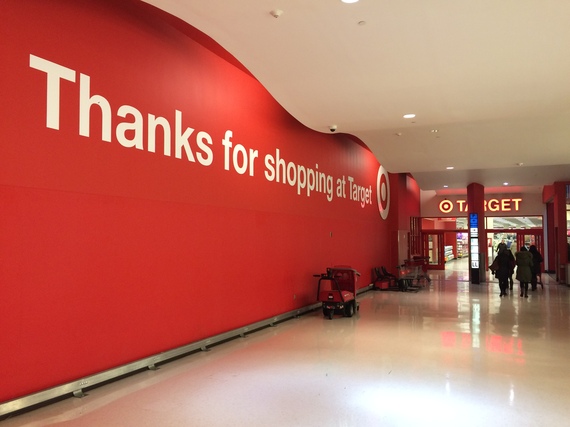"If you build it, he will come." So said the disembodied voices in the iconic 1980s baseball fantasy Field of Dreams. The response of Kevin Costner's character to the whispers emanating from his cornfield was to build a baseball stadium in the middle of his farm. And while the movie had a happy ending, retailers venturing to "build it" in other pastures have not always been so successful.
In the last week, U.S. discount department store Target has announced a retreat from Canada four years after opening there, closing 133 stores, ending 17,600 jobs, and burning US$2 billion in cash. What went wrong? A big part of it came down to not understanding the Canadian shopper. According to the New York Times, "Canadians found Target's Canadian stores to be more expensive than they anticipated...it also failed to understand the depths of Canadian loyalty to certain competitors...or the reluctance of its consumers to adopt a one-stop shopping habit...(and) Target failed to distinguish itself from several Canadian retailers..." And so Target paid the ultimate price.
It's not the first time that a high profile retailer has crossed borders and been decisively pushed back. In the cases that I have studied, there is a kind of business bravado and cultural blindness that precedes a fall. I'm also sure that in most cases, the failure could have been prevented, or at least the damage moderated, by understanding the local shopper, and adapting to suit his or her wants, needs and aspirations.
As an Aussie, I recall Starbucks storming Down Under only to be tipped Up Over. After opening in 2001, Starbucks closed 70% of its 84 stores just seven years later. And this year, it handed over its remaining 24 cafes to the Australian operator of 7-11. Again, what went wrong? As reported in The Drum, "they just took what worked in the US, and tried it here. Unfortunately for Starbucks, what worked in the US was bitter, weak coffee augmented by huge quantities of milk and sweet flavored syrups." Ouch. We Australians are somewhat coffee snobs, and as one we rejected the intruder.
U.S. electronics chain Best Buy similarly blew a fuse when they tried to expand to China. In 2011, after five years in the market, Best Buy shuttered all its stores. The cause? The prices were too high and the big stores too inconvenient. As CNBC noted, "going forward, foreign retailers need to localize their product selection, sales formats and be smarter in their location choice in order to compete with emerging brand savvy, local players."
Americans are not the only ones who have had a tough time on foreign soil. First time around in the UK, Japanese fast-fashion merchant Uniqlo failed miserably. They opened 21 stores in 2002 in the British Isles, but only eight were still standing in 2006. Two of the reasons nominated were lack of awareness of the brand, plus incorrect sizing (to suit the more ample British frame). Like their American brethren, Uniqlo just didn't resonate with their new shopper.
For the record, I admire all the brands I have written about in this post. But to me, there's a pretty simple lesson out of all this. Just because you are a hit at home, doesn't mean you will knock it out of the park when you play away. Even in this increasingly globalized world, localization is critically important (maybe more so than ever). It's worth the effort to listen...really listen...to the locals, understand their particular mindset and respond accordingly. Otherwise the Field of Dreams might become a Field of Screams.
